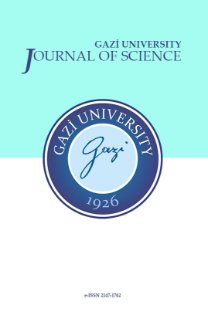A New Proposed Estimator for Reducing Bias Due to Undetected Species
___
- [1] Batten, L. A., “Bird communities of some Killarney woodlands”, Proceedings of the Royal Irish Academy. Section B: Biological, geological, and chemical science. Royal Irish Academy, 76: 285-313, (1976).
- [2] Bonachela, Juan A., Haye Hinrichsen and Miguel A. Munoz, “Entropy estimates of small data sets”, Journal of Physics A: Mathematical and Theoretical, 41(20): 1-9, (2008).
- [3] Li, Y. and Busch, P., “Von Neumann entropy and majorization”, Journal of Mathematical Analysis and Applications 408(1): 384–393, (2013).
- [4] Chao, A. and Lee, S.M., “Estimating the number of classes via sample coverage”, Journal of the American statistical Association, 87(417): 210-217, (1992).
- [5] Chao, A., Ma, M.C., Yang, M.C., “Stopping rules and estimation for recapture debugging with unequal failure rates”, Biometrika, 80(1): 193-201 (1993).
- [6] Chao, A., Hwang, W.H., Chen, Y.C., Kuo, C.Y., “Estimating the number of shared species in two communities”, Statistica sinica, 10: 227-246, (2000).
- [7] Chao, A., Shen, T.J., “Nonparametric estimation of Shannon's index of diversity when there are unseen species in sample”, Environmental and Ecological Statistics, 10(4): 429-443, (2003).
- [8] Chao, A., Wang, Y.T., Jost, L., “Entropy and the species accumulation curve: a novel entropy estimator via discovery rates of new species”, Methods in Ecology and Evolution , 4(11): 1091-1100, (2013).
- [9] Chao, A., Chiu, C.H., “Species richness: estimation and comparison”, Wiley StatsRef: Statistical Reference Online, 1-26, (2016).
- [10] Chiu, C.H., Wang, Y.T., Walther, B.A., Chao, A., “An improved nonparametric lower bound of species richness via a modified Good–Turing frequency formula”, Biometrics, 70: 671-682, (2014).
- [11] Gorelick, R., “Combining richness and abundance into a single diversity index using matrix analogues of Shannon’s and Simpson’s indices”, Ecography, 29: 525-530, (2006).
- [12] Grassberger, P., “Finite sample corrections to entropy and dimension estimates”, Physics Letters A, 128(6-7): 369-373, (1988).
- [13] Grassberger, P., “Entropy Estimates from Insufficient Samplings”, ArXiv Physics e-prints, 0307138, (2003).
- [14] Holst, L., “Some asymptotic results for incomplete multinomial or Poisson samples”, Scandinavian Journal of Statistics, 8: 243-246, (1981).
- [15] Holste, D., Grosse, I., Herzel, H., “Bayes' estimators of generalized entropies”, Journal of Physics A: Mathematical and General, 31(11): 2551-2566, (1998).
- [16] Janzen, D.H., “Sweep samples of tropical foliage insects: description of study sites, with data on species abundances and size distributions”, Ecology, 54(3): 659-686, (1973a).
- [17] Janzen, D.H., “Sweep samples of tropical foliage insects: effects of seasons, vegetation types, elevation, time of day, and insularity”, Ecology, 54(3): 687-708, (1973b).
- [18] Miller, G., “Note on the bias of information estimates”, Information Theory in Psychology: Problems and Methods, 95-100, (1955).
- [19] Schurmann, T., “Bias analysis in entropy estimation”, Journal of Physics A: Mathematical and Theoretical, 37(27): L295-L301, (2004).
- [20] Shannon, C. E., “A mathematical theory of communication”, Bell System Technical Journal, 27(3): 379-423, (1948).
- [21] Zahl, S., “Jackknifing an index of diversity”, Ecology, 58(4): 907-913, (1977).
- [22] Zhang, Z., “Entropy Estimation in Turing's Perspective”, Neural Computation, 24(5): 1368-1389, (2012).
- Yayın Aralığı: 4
- Başlangıç: 1988
- Yayıncı: Gazi Üniversitesi, Fen Bilimleri Enstitüsü
Manufacturing of Hybrid Yarn Thermoplastic Composites by the Method of Filament Winding
Burçin ÖZBAY, Aylin BEKEM, Ahmet ÜNAL
Amit Kumar SINGH, Cüneyt Süheyl ÖZVEREN
Gülsen ASMAN, Gülşen TAŞKIN ÇAKICI, Ebru KONDOLOT SOLAK, Kannan SİVAPRAKASAM
Alaeddin Burak İREZ, Emin BAYRAKTAR
Ali DANANDEH MEHR, Farzaneh BAGHERİ, Mir Jafar Sadegh SAFARİ
Slash Maxwell Distribution: Definition, Modified Maximum Likelihood Estimation and Applications
Sukru ACITAS, Talha ARSLAN, Birdal SENOGLU
Derya ARSLAN, Musa ÇAKIR, Younis MASİHA
Electrical Energy Demand Prediction: A Comparison Between Genetic Programming and Decision Tree
Farzaneh BAGHERI, Mir Jafar Sadegh SAFARI, Ali DANANDEH MEHR
